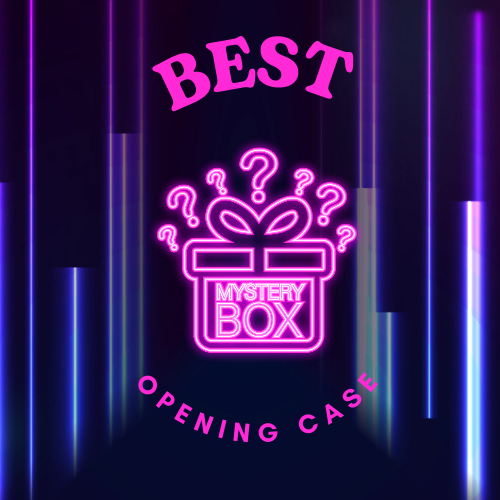
Mystery boxes have surged in popularity across various industries, from fashion and electronics to gaming and collectibles. The thrill of the unknown has drawn a diverse range of buyers, each with unique motivations and expectations. While some are passionate collectors searching for rare and valuable items, others are casual buyers seeking a fun and spontaneous shopping experience.
Understanding these different audiences is crucial for mystery box platforms, brands, and marketers looking to tailor their offerings and improve customer satisfaction. In this article, we’ll explore the key demographics of mystery box buyers, what drives their purchasing decisions, and how platforms can cater to their needs.
The psychology behind mystery box buyers
Before diving into specific audience segments, it’s important to understand the psychological appeal of mystery boxes. Across all buyer types, several core psychological factors contribute to their popularity:
- The thrill of surprise – Opening a mystery box triggers an emotional high similar to gambling, where the unknown outcome excites the brain’s reward system.
- FOMO (fear of missing out) – Limited-edition boxes and exclusive drops create urgency, making people want to participate before they miss out on potential rewards.
- Perceived value – Buyers often believe they are getting a better deal than purchasing items separately, even if the exact contents are unknown.
- Gamification elements – Many mystery box platforms incorporate gaming mechanics, such as prize tiers, probability charts, and bonus rewards, keeping users engaged.
While these factors apply to all mystery box buyers, different audience segments interact with mystery boxes in their own ways.
The core mystery box audiences
1. The dedicated collector
Who they are:
Collectors are perhaps the most passionate segment of mystery box buyers. They are driven by the pursuit of rare, limited-edition, or exclusive items, often in specific categories like sneakers, trading cards, NFTs, or luxury goods.
What motivates them:
- The thrill of acquiring hard-to-find or high-value collectibles.
- Adding to their existing collection and increasing its monetary or sentimental value.
- The potential for reselling valuable finds in collector communities.
- The sense of community and prestige that comes with owning rare items.
How brands can cater to them:
- Offering tiered mystery boxes with guarantees of rare or valuable items.
- Providing detailed probability breakdowns for high-value items.
- Creating limited-edition collaborations with well-known brands and influencers.
- Developing a VIP membership program for exclusive access to premium boxes.
Example:
A sneaker collector might buy a mystery box from a platform like StockX, hoping to score a rare Jordan 1 collaborationor a Yeezy release. If they receive a common item, they may trade or resell it to fund future purchases.
2. The casual buyer
Who they are:
Casual buyers represent a broad and fast-growing segment of the mystery box audience. They enjoy the excitement but are not necessarily seeking high-value or rare items. Their primary goal is to have fun and experience a surprise without committing to a large investment.
What motivates them:
- The affordable entertainment aspect of mystery boxes.
- The joy of unboxing and sharing the experience with friends or online.
- A way to explore new products or brands without making specific choices.
- Seasonal events and holiday promotions that make mystery boxes a fun gift.
How brands can cater to them:
- Offering budget-friendly mystery boxes with guaranteed value.
- Partnering with influencers to showcase the fun unboxing experience.
- Introducing seasonal or holiday-themed mystery boxes.
- Providing discounts or subscription-based mystery boxes for ongoing engagement.
Example:
A casual buyer might purchase a gaming mystery box that includes a mix of small gaming accessories, digital gift cards, or a chance to win a gaming console. They may not be disappointed if they don’t hit the jackpot, as they still receive useful items.
3. The resellers and flippers
Who they are:
Resellers buy mystery boxes strategically with the intent of reselling items for profit. They analyze potential margins, seek out high-value products, and often participate in bulk purchases.
What motivates them:
- The potential for high returns on investment by reselling valuable items.
- The excitement of finding underpriced or rare items.
- Access to wholesale-priced goods through mystery box platforms.
- The opportunity to build a resale business through platforms like eBay or StockX.
How brands can cater to them:
- Offering bulk purchase options with discounts for high-volume buyers.
- Providing clear resale-friendly packaging and authenticity guarantees.
- Including high-demand, brand-name items in premium mystery boxes.
- Developing partnerships with resale communities and marketplaces.
Example:
A reseller may buy a mystery electronics box that contains refurbished Apple products, gaming peripherals, or headphones. They will keep high-value items and resell the rest for a profit.
4. The gift-giver
Who they are:
Many people purchase mystery boxes as gifts for friends, family, or colleagues. These buyers prioritize presentation, excitement, and unique gift ideas.
What motivates them:
- Finding a fun and surprising gift for birthdays, holidays, or special occasions.
- Offering an experience-based gift rather than just a physical product.
- Choosing a box based on the recipient’s interests (gaming, fashion, toys, etc.).
How brands can cater to them:
- Designing premium packaging that enhances the gifting experience.
- Offering personalized mystery boxes based on customer preferences.
- Providing gift cards for mystery box purchases.
- Introducing seasonal promotions tailored to gift-giving occasions.
Example:
A parent may buy a toy-themed mystery box for their child, filled with surprise action figures, plush toys, or collectibles. The excitement of not knowing what’s inside adds to the fun of unwrapping the gift.
5. The subscription-based enthusiast
Who they are:
Subscription mystery box buyers enjoy monthly surprises and see mystery boxes as a form of ongoing entertainment. They value convenience and consistency over rare finds.
What motivates them:
- The excitement of receiving a surprise package every month.
- The convenience of discovering new products without effort.
- A sense of belonging to a brand’s community through membership perks.
How brands can cater to them:
- Offering themed subscription boxes tailored to customer interests.
- Providing exclusive discounts or early access for long-term subscribers.
- Including branded merchandise to foster customer loyalty.
- Using gamification, such as rewards for continuous subscriptions.
Example:
A beauty enthusiast may subscribe to a mystery skincare box, receiving a mix of trending skincare products and sample sizes every month.
Why understanding mystery box audiences matters
For mystery box platforms and retailers, knowing who their customers are allows them to:
- Optimize product selection to match audience interests.
- Adjust marketing strategies to appeal to different segments.
- Enhance customer satisfaction by managing expectations.
- Increase brand loyalty through personalized engagement.
By tailoring mystery boxes to different types of buyers, brands can maximize both excitement and long-term customer retention.
Mystery boxes attract a diverse range of buyers, from hardcore collectors and resellers to casual shoppers and gift-givers. Each group has different motivations, expectations, and spending habits, making it essential for brands to understand their audience and curate their offerings accordingly.
Whether it’s through high-value limited-edition items for collectors, affordable fun for casual buyers, or exclusive perks for subscription-based shoppers, mystery box platforms have endless opportunities to cater to their growing customer base. By recognizing the psychology and behaviors behind each audience segment, brands can create more engaging, rewarding, and personalized experiences for their customers.
